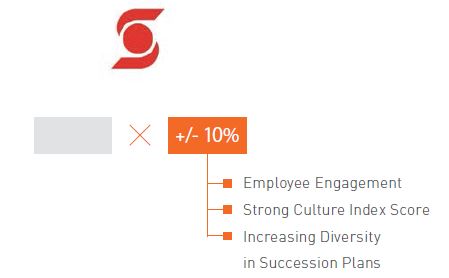Every year, Hugessen Consulting conducts a review of the proxy circulars filed by the constituents of the S&P / TSX60 Index to report on trends in executive compensation and related governance practices among Canada’s largest and most influential companies. This article is the second in a three-part series summarizing our findings related to environmental, social, and governance (“ESG”) metrics in executive compensation programs among these companies.
Part 1 of our series focused on the prevalence of ESG metrics being incorporated into incentive plans. Part 2 provides a deeper dive on how ESG metrics are incorporated into incentive programs (i.e., short term versus long term plans, weighted measure versus modifier). Part 3 will address the types of ESG metrics being used and measured.
A full recording of Hugessen's webinar on Emerging Trends in Executive Compensation and ESG can be found here. Part 1 of our 2022 TSX60 ESG series can be found here.
ESG in Incentive Plans: STIP vs. LTIP?
As discussed in more detail in Part 1 of our 2022 TSX60 ESG series, 68% of TSX60 companies that incorporate ESG metrics in their incentive plans do so in only the STIP, 27% have ESG metrics in both the STIP and LTIP, and 2% include ESG metrics only in the LTIP.
Below we provide additional detail as to how ESG metrics are incorporated into both STIPs and LTIPs among TSX60 companies.
ESG in STIP
In general, we observe the following methods used when incorporating ESG into the STIP:
As illustrated below, the use of an ESG measure as part of the corporate scorecard is most common (either as a bucket or a discrete metric). We also observe just over 30% of companies incorporating ESG into the Individual component. While modifiers exist, they are a less common approach.
Individual Objectives
Approximately 30% of TSX60 companies include ESG measures as part of an executive’s individual objectives, which are typically considered within a broad assessment of individual outcomes, alongside other strategic and operational objectives. While 5 (8%) TSX60 companies use individual objectives as the only incentive mechanism that measures ESG, most issuers combine this approach with another, more "formal" ESG measure embedded into their incentive plans (22%).
Alimentation Couche-Tard’s STIP includes individual performance weighed at 25%, with broad ESG categories considered in the assessment.
Individual performance (25% of STIP) includes the following ESG objectives (among other operational and strategic measures):
Scorecard (Bucket or Discrete Metric)
61% of TSX60 companies include ESG metrics in the corporate scorecard, either through a “bucket” approach, or by carving out a discrete weighted measure (or a combination of the two). As mentioned in part 1 of our series, for the 32 companies that have defined the weight of ESG metrics within their scorecards, these metrics are weighted at approximately 20%, on average, which is similar to the past few years.
Modifier 
7% of TSX60 companies include ESG metrics as a modifier to the overall STIP
or variable compensation plan outcome.
One example in the market is Scotiabank, which has incorporated a "strategic and
operational modifier,” which is a plus or minus 10% adjustment based on several measures, including diversity and inclusion, culture, and employee engagement. Scotiabank has indicated the ESG metrics will make up a weighted component of the scorecard for FY2022.
ESG in LTIP
While most TSX60 companies incorporate ESG metrics within their short-term plans, incorporating ESG metrics into long-term incentives can be seen as a more natural fit for ESG metrics. The use of ESG measures in an LTIP is viewed as a leading practice, as it 1) may be better aligned with the long-term nature of many ESG metrics; and 2) the LTIP typically makes up a greater proportion of executives’ total compensation, and therefore the metrics have a larger impact.
One way that some companies are starting to tie LTIPs to ESG measures is through front-end performance conditioning, whereby annual performance (such as the STIP scorecard) adjusts the size of LTIP grants. This is the approach taken at some of the Banks, CNRL, and Canadian Apartment Properties REIT, to name a few.
Some issuers have gone a step further by incorporating ESG measures to the performance share unit, or PSU. There were several new examples of companies incorporating ESG metrics into their PSUs this proxy season, including Waste Connections, which added a 15% ESG metric within its PSUs, as well as Teck and Fortis, which disclosed their plans to do so in 2022.
Teck Resources’ 2022 PSUs will include a “Sustainability Progress Index” weighted at 20%, which is composed of five equally-weighted metrics, including a climate change target tied to a goal of 33% reduction in carbon intensity by 2030; a Tailings Facilities Management metric tied to implementation of global industry standards on tailings; and an Equity, Diversity, and Inclusion metric tied to increasing the percentage of women at the Company.